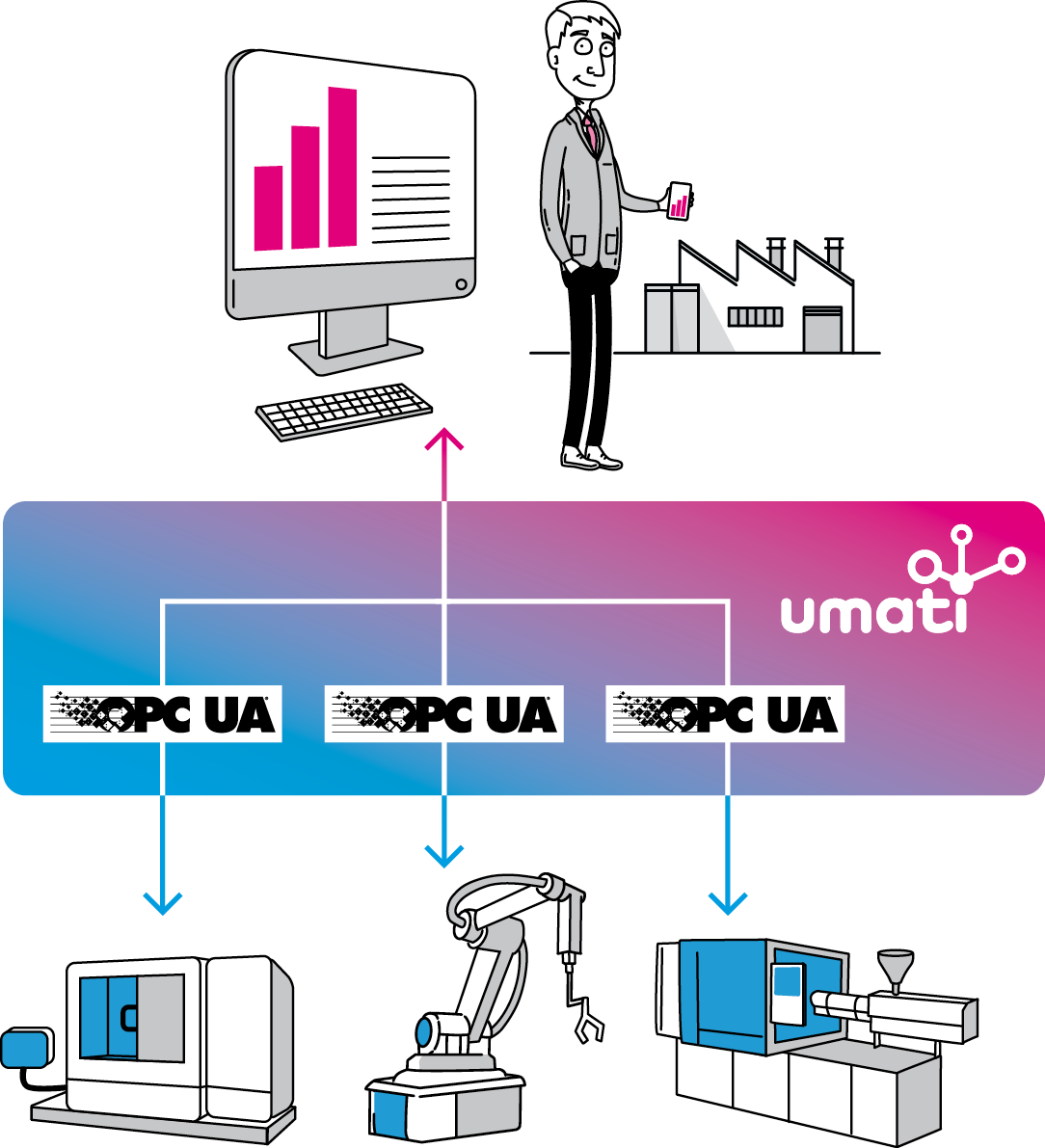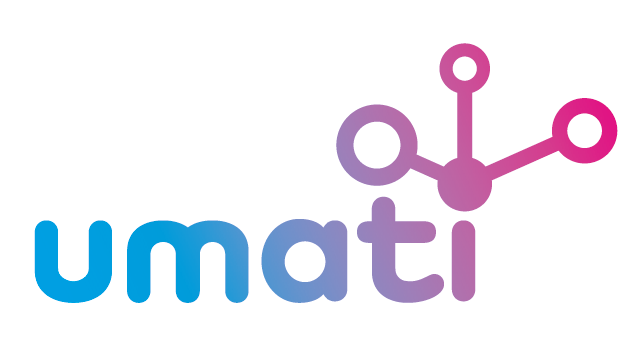the umati vision
umati serves to exploit new potentials for manufacturing of the future by:
- Simplifying the effort for machine connection to customer-specific IT infrastructures and ecosystems.
- Simplifying the effort for machine-to-machine and machine-to-device communication
- Reducing costs through faster realization of customer specific projects.

the umati promise
Make connectivity between machinery and software easy, secure and seamless – to help customers exploit added value from data.
To achieve this, umati creates a community and an ecosystem consisting of:
- OPC UA Companion Specifications to define globally applicable semantics for machinery
- Communication Default Requirements for the implementation of an OPC UA environment (e.g., encryption, authentification, server settings (ports, protocols) to allow plug-and-play connectivity between machines and software
- Quality Assurance through testing specifications and tools, certification, and serving as ombudsman for supplier-client disputes
- Marketing and a label for visbility in the market through a global community of machine builders, component suppliers, and added value services.
the umati mission
Providing visibility and joint, cross-industry marketing for the simplest possible connectivity in the machinery sector.
- Aims primarily at customers and end users = buyers and users of machines, installations and software from the machine manufacturers
- Aims secondarily at companies in the machinery sector itself, e.g. to enforce interoperability across control platforms, to establish horizontal connectivity, to be prepared for the future by standardizing and using open interfaces and to save money and effort to improve the products.
- Is not a stand-alone OPC UA Companion Specification – the use of OPC UA Companion Specifications is the basis of umati.
- Providing the user promise of “plug and play” through guidelines for a “unified” OPC UA Companion Specification implementation for products of the machinery industries.
- Will be established as a product label in the long run to signal trust and reliability to the end customers (“We as machine builders take care that you, dear customer, can easily get data from your machines”)
setting the standard
Creating a standard with global acceptance is a challenge. umati relies on OPC UA as the global interoperability standard.
The standardization work takes place in several joint working groups with various sectors of machine building industries and the OPC Foundation. This guarantees consideration of individual needs for different technologies, maximum transparency and the support of a strong global community.
OPC UA and the OPC Foundation:
- provide a framework for standardized communicatiuon (How to communicate)
- allows focusing on defining the what is to be communicated (Companion speficiations)
- include a global community for revising the standard
- assists in a global outreach be publishing the standard with no license fee.
The joint working groups focus on setting standards for vertical and/or horizontal integration of machinery, installations, components, and production IT ecosystems.
The following groups are participating in the umati community already:
- Robotics
- Machine Vision
- Machine Tools and Manufacturing Systems
- Rubber and Plastics Machinery
- … more to come
Because some information items are common throughout all machinery industries, an OPC UA for Machinery as base specification is also under development. The first version was released in September 2020. It aims to harmonize aspects such as
- Machine identification
- Component identification
- Finding all Machines in a Server
- Machine state (currently in development)
building the community
umati brings machine builders and users together.
Partners involved in umati make a common promise to their customers: “We as machine builders, component or software suppliers jointly take care that you, dear customer, can easily access data from your machines.

